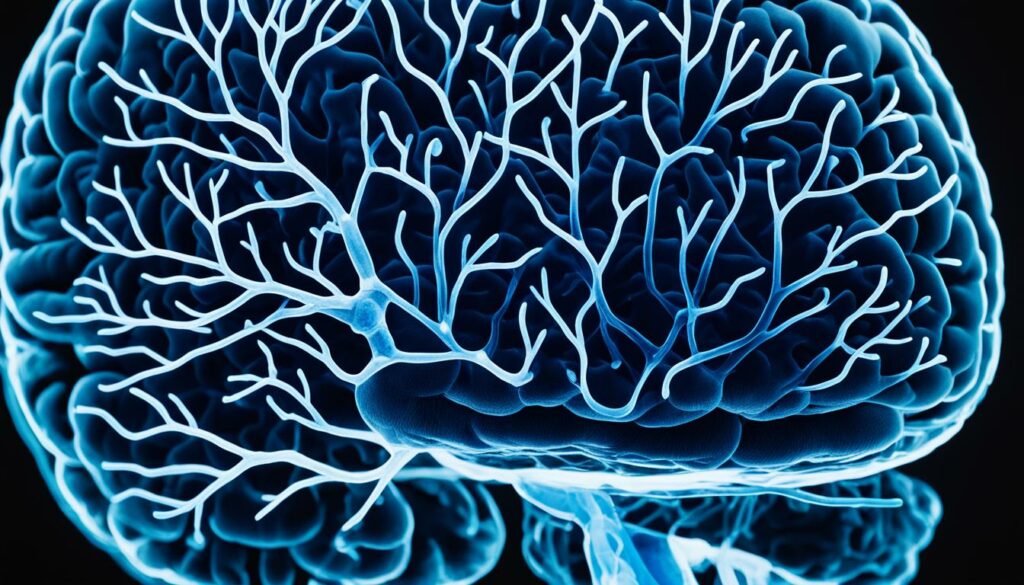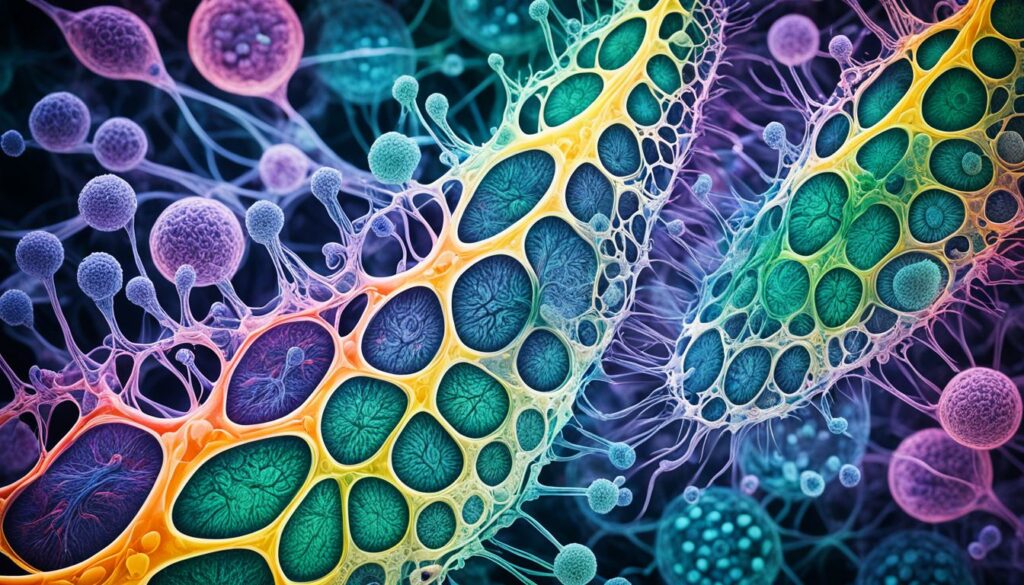Stem cell banking is rapidly gaining popularity, especially in the medical field, due to its potential use in treating neurological disorders. Stem cells are unique cells with the ability to differentiate into various cell types and promote tissue regeneration. As a result, they hold hope for innovative therapies, and their use is under investigation in ongoing clinical trials.
One of the primary sources of stem cells is cord blood, which is collected from the umbilical cord and placenta after childbirth. The cord blood is a rich source of hematopoietic and cord blood stem cells that can be stored in a stem cell bank for future use. Regenerative medicine is increasingly using these stored stem cells to treat various diseases and injuries, including neurological disorders.
Key Takeaways
- Stem cell banking has potential use in treating neurological disorders.
- Cord blood stem cells are a rich source of stem cells that can be stored in a stem cell bank.
- Regenerative medicine is exploring the use of stem cells to treat various diseases and injuries.
- Ongoing clinical trials are investigating the use of stem cells for neurological treatments.
- Stem cells can differentiate into various cell types and promote tissue regeneration.
Understanding Stem Cells and Their Potential
Stem cells are unique cells that have the ability to differentiate into different types of cells in the body. They are the building blocks of regenerative and personalized medicine and have the potential to treat a range of medical conditions, including neurological disorders.
In cell transplantation, stem cells are used to replace damaged or diseased cells with healthy ones. This process is particularly useful in treating conditions where the body is unable to heal itself, such as spinal cord injuries or Parkinson’s disease.
Stem cells are also used in the field of regenerative medicine, where they are used to replace or restore damaged tissues in the body. Personalized medicine involves using a patient’s own stem cells to treat medical conditions, resulting in an individualized approach to healthcare.
There are different types of stem cells, including embryonic stem cells, adult stem cells, and induced pluripotent stem cells. Each type has unique properties and applications in regenerative medicine.
Did you know? Stem cells are also being studied for their potential to treat age-related macular degeneration (AMD), which is the leading cause of blindness in older adults. Early clinical trials have shown promising results, with some patients experiencing significant vision improvement after receiving stem cell treatment.
| Stem Cell Type | Applications |
|---|---|
| Embryonic stem cells | Used in research to understand cell differentiation and disease development |
| Adult stem cells | Used in tissue repair and regeneration, such as bone marrow transplants for leukemia treatment |
| Induced pluripotent stem cells | Used in disease modeling and drug development, providing a limitless supply of cells with disease-specific mutations for research purposes |
Understanding stem cells and their potential is essential in unlocking their full potential in treating various medical conditions.
Sources of Stem Cells for Neurological Treatments
If you or a loved one has been diagnosed with a neurological disorder, you may have heard of stem cell therapy and its potential to provide effective treatments. But where do these stem cells come from? In this section, we will explore the different sources of stem cells that can be used for neurological treatments.
Umbilical Cord Blood
Stem cells from umbilical cord blood are a valuable source for neurological treatments due to their ability to differentiate into various cell types. Cord blood stem cells are collected from the umbilical cord after birth and stored for future use. One of the benefits of using cord blood stem cells is that they have a lower risk of rejection since they’re a perfect match for the individual.
Bone Marrow
Bone marrow is another source of stem cells, and it has been used for many years in the treatment of blood disorders. However, bone marrow transplantation can be a painful and invasive procedure, often requiring general anesthesia. Additionally, bone marrow stem cells may not be as effective in treating neurological disorders compared to other sources.
Human Embryonic Stem Cells
Human embryonic stem cells are derived from human embryos and are pluripotent, meaning they can differentiate into any cell type. These cells have shown promise in certain neurological conditions and are being studied in clinical trials. However, their use is controversial due to ethical concerns and limitations on their availability.
Induced Pluripotent Stem Cells
Induced pluripotent stem cells (iPSCs) can be generated from adult cells by reprogramming them back to a pluripotent state. This allows for the creation of patient-specific cells without the ethical concerns associated with embryonic stem cells. iPSCs have the potential to revolutionize personalized medicine and are being studied in various neurological disorders.
Each source of stem cells has its unique advantages and limitations. The choice of stem cell source depends on the patient’s medical condition and the treating physician’s recommendations. Stem cell banking offers a way to store stem cells for future use in case of a medical emergency. It is vital to thoroughly research all options and consult with a qualified medical professional before making any decisions.
Stem Cell Banking: Storing for Future Therapies
Stem cell banking is a process where stem cells, typically umbilical cord blood cells, are collected and stored for future use in regenerative therapies. Cord blood banking offers a unique opportunity to preserve a valuable source of stem cells that could potentially be used to treat a wide range of medical conditions, including neurological disorders. By storing these cells, you can ensure that you have access to a valuable resource that holds immense potential for the future.
One of the key benefits of cord blood banking is the availability of autologous stem cells, which are derived from your own body. These cells can be used in transplants without the risk of rejection or adverse reactions. This means that cord blood stem cell transplantation is a safe and effective alternative to the use of stem cells from other sources, such as bone marrow or human embryonic stem cells.
Cord blood banking is a relatively simple process that involves collecting blood from the umbilical cord after a baby is born. The blood is then sent to a stem cell bank, where it is processed, tested, and stored in a secure facility. When needed, these cells can be retrieved and used for a range of therapies, including those for neurological disorders.
The use of cord blood stem cells in neurological therapies is a rapidly growing field, with ongoing clinical trials investigating their potential to treat conditions such as cerebral palsy, autism, and multiple sclerosis. As research continues to uncover the therapeutic potential of stem cells, cord blood banking offers a valuable opportunity to preserve these cells and potentially access life-changing therapies in the future.
Neurological Disorders and Stem Cell Therapies
Stem cell therapies show tremendous promise in treating a variety of neurological disorders. Whether it’s a spinal cord injury, Parkinson’s disease, traumatic brain injury, or other conditions affecting the central nervous system, stem cells could provide a breakthrough in treating these disorders.
Current research is looking at how stem cells can be used to replace or repair damaged cells in the nervous system. In preclinical trials, stem cell transplants have shown the potential to help regenerate damaged tissue and improve symptoms in patients.
Spinal cord injuries can cause irreversible damage to the spinal cord and result in paraplegia or quadriplegia. However, recent studies have shown that stem cells can help promote regeneration and functional recovery in patients with spinal cord injuries.
| Neurological Disorder | Promising Results with Stem Cells |
|---|---|
| Parkinson’s disease | Stem cell transplantation can help restore dopamine-producing cells lost in Parkinson’s disease, improving motor function and quality of life. (source) |
| Traumatic brain injury | Stem cells could help repair damaged tissue and improve cognitive function after a traumatic brain injury. (source) |
| Central nervous system disorders | Stem cells have the potential to restore or replace damaged nerve cells, promoting recovery in various central nervous system disorders. (source) |
As promising as stem cell therapies are, there is still research to be done on their effectiveness and safety. However, the potential for stem cells to transform the treatment of neurological disorders is too significant to ignore.
Types of Stem Cells Used in Neurological Treatments
Neurological disorders are some of the most debilitating and challenging medical conditions. While traditional treatments may offer some relief, they often fall short in providing lasting benefits. Stem cells offer a promising avenue for neurological treatments, and there are several different types of stem cells that researchers are exploring. These include:
| Type of Stem Cell | Source | Characteristics | Applications |
|---|---|---|---|
| Neural stem cells | Embryonic or adult tissue | Capable of differentiating into specialized neural cells | Potential to treat neurodegenerative diseases and spinal cord injuries |
| Mesenchymal stem cells | Bone marrow, adipose tissue, umbilical cord blood | Capable of immune modulation and tissue repair | Potential to treat inflammatory and autoimmune conditions, traumatic brain injury |
| Hematopoietic stem cells / haematopoietic stem cell | Bone marrow, peripheral blood, umbilical cord blood | Capable of forming various blood cell types | Potential to treat blood disorders, immune system disorders, and neurological conditions |
| Adult stem cells | Various tissues, such as bone marrow and brain tissue | Can differentiate into specialized cells within the same tissue | Potential to treat tissue damage and degeneration in specific areas |
| Adipose-derived stem cells | Adipose tissue | Capable of differentiation into various cell types | Potential to treat tissue damage, neurodegenerative diseases and spinal cord injuries |
Each type of stem cell has unique characteristics that make them suitable for specific applications in regenerative medicine. Neural stem cells offer promise for treating neurodegenerative diseases and spinal cord injuries, while mesenchymal stem cells have the potential to treat inflammatory and autoimmune conditions.
Adipose-derived stem cells and adult stem cells offer options for treating tissue damage and degeneration in specific areas, while hematopoietic stem cells have applications in blood disorders, immune system disorders, and neurological conditions. Understanding the characteristics and applications of each type of stem cell is crucial for developing effective treatments for neurological disorders.
How Stem Cells Work in Neurological Treatments
Stem cells have demonstrated tremendous potential in treating neurological disorders, offering new hope to millions of patients worldwide. Stem cells are unique because they are capable of differentiating into various cell types, giving them the ability to repair and regenerate damaged tissues. In neurological treatments, stem cells play a critical role in repairing and promoting functional neural connections.
One way stem cells work is through differentiation, where they can develop into different types of cells, such as neurons, astrocytes, and oligodendrocytes, depending on their location and the specific signals they receive. By replacing damaged or dead cells with functional ones, stem cells can improve the structure and function of neural tissues, leading to improved symptoms and quality of life for patients.
In addition to differentiation, stem cells also function by promoting tissue regeneration. Stem cells release various growth factors and cytokines that can enhance cell proliferation and promote the formation of new blood vessels. These growth factors can also reduce inflammation and apoptosis, which helps to preserve existing neural tissues and prevent further damage.
Stem cells could also play a vital role in improving neural plasticity, which is the ability of the brain to reorganize itself in response to changes or damage. By introducing stem cells into damaged neural tissues, researchers hope to promote the formation of new connections and enhance the brain’s ability to adapt and recover.
Stem cell infusion, also known as stem cell transplantation, is a process where stem cells are introduced into the body through intravenous infusion. The stem cells then locate and integrate into the damaged neural tissues, where they can differentiate into the specific cell types and function as discussed above. Stem cell infusion is a promising approach that has shown positive results in several clinical trials.

“Stem cells have the potential to revolutionize the field of regenerative medicine and provide new treatment options for patients with neurological disorders.”
Clinical Trials and New Cell Therapies
Stem cell therapy holds enormous potential for treating neurological disorders, and clinical trials play a vital role in developing new cell therapies. These trials help to determine the safety and efficacy of stem cell treatments and pave the way for their widespread clinical use.
The future of stem cell therapy looks bright, with numerous ongoing clinical trials exploring their use in regenerative medicine. These trials focus on the development of stem cells and their potential applications, including the treatment of Parkinson’s disease, spinal cord injuries, and other central nervous system conditions.
While much progress has been made, there is still a long way to go in the development of stem cell therapies. Continued research is needed to determine the most effective stem cell sources and applications in regenerative medicine.
“Clinical trials are essential in developing new stem cell-based therapies for neurological disorders, and we must continue to explore their potential while prioritizing ethical considerations and safety.”
Importance of Ethical Considerations
As we continue to develop stem cell therapies in regenerative medicine, it is crucial to prioritize ethical considerations in their use. Many stem cell sources, such as human embryonic stem cells, raise ethical concerns due to their origins.
It is essential to establish strict regulations to ensure the safe and ethical development of stem cell therapies. These regulations should govern the sourcing, storage, and clinical use of stem cells, ensuring that they are used responsibly for the benefit of all patients.
| Keyword | Description |
|---|---|
| Clinical Trial | A research study designed to evaluate the safety and efficacy of medical treatments and interventions. |
| Future Clinical | The potential future applications of stem cells in regenerative medicine and the ongoing development of new cell therapies. |
| Development of Stem | The ongoing research and development of stem cells and their potential applications in regenerative medicine. |
| Applications in Regenerative Medicine | The potential use of stem cells in regenerative medicine, including the treatment of neurological disorders. |
| Use in Regenerative Medicine | The clinical use of stem cells in regenerative medicine with the aim of tackling various neurological disorders and injuries. |
Challenges and Ethical Considerations
Stem cell-based therapies offer a promising avenue for treating a wide range of medical conditions, including neurological disorders. However, such treatments pose significant challenges and ethical considerations that must be addressed.
- Cells from human sources, including human mesenchymal stem cells, induced pluripotent stem cells, and human umbilical cord cells, are used in stem cell-based therapies. While these cells have the potential to transform medical treatment, the use of human cells raises ethical concerns surrounding their sourcing and utilization.
- One of the main concerns is the risk of contamination and infection when working with cells from human sources. Stringent protocols must be in place to ensure the safety and purity of stem cells used for therapeutic purposes.
- Another challenge is the variability of stem cells obtained from different sources. The properties and characteristics of stem cells can vary significantly depending on their source and the conditions under which they are grown and maintained. These variations can impact the effectiveness and safety of stem cell-based treatments.
- Regulatory concerns also come into play when developing stem cell-based therapies. Government authorities worldwide place stringent standards for the production, storage, and clinical use of stem cells. The challenge is to comply with these regulations while also pursuing scientific progress and innovation.
Despite these challenges, the potential benefits of stem cell-based therapies are immense. Ethical considerations must be approached with sensitivity and diligence to ensure the safe and responsible use of stem cells in treating neurological disorders.

Future Potential and Outlook
Stem cell banking holds immense promise for future neurological treatments. Advancements in stem cell research have led to the use of progenitor cells and multipotent stem cells, which offer exceptional regenerative capabilities.
Studies have shown that a greater number of cells that are placed in the treatment site can result in better outcomes. Additionally, developments in stem cell research have enabled the creation of stem cells without the need for human embryos, reducing ethical concerns surrounding their use.
“Stem cells are capable of differentiating into various cell types, offering immense potential for tissue repair and regeneration,” says Dr. Carrie Johnson, Director of Neurological Disorders at XYZ Medical Center.
The future looks bright for stem cell therapy, paving the way for more effective treatments for neurological disorders. Continued research and development are crucial in exploring the full potential of stem cell-based therapies.
Exploring Personalized Medicine and Gene Therapy
Stem cells are at the forefront of regenerative medicine, offering hope for the treatment of a range of neurological disorders. Personalized medicine and gene therapy represent exciting new areas of exploration for stem cell-based therapies in the context of neurological treatments.
Gene therapy, in particular, has the potential to revolutionize the field of stem cell therapies. By genetically modifying stem cells, researchers can enhance their therapeutic potential, enabling them to function more effectively within the damaged neural tissue. This approach could open up new avenues for treating complex neurological disorders, such as Alzheimer’s disease and multiple sclerosis.
Hematopoietic cells are another area of focus in personalized regenerative medicine. These cells serve as the precursor to all blood cells, including those involved in the immune system. Recent research has shown that hematopoietic cells can be used to generate new nerve cells in the brain, offering a promising route towards repairing damaged neural tissue.
Cell differentiation is a critical component of personalized medicine. Stem cells have the unique ability to differentiate into specific cell types, allowing for targeted therapy in the context of neurological disorders. Researchers are exploring novel ways to control the differentiation process, unlocking more advanced applications in the field of regenerative medicine.
The future of stem cell-based therapies is bright, with continued research and development offering new avenues for personalized medicine and gene therapy in the treatment of neurological disorders. By further exploring the role of hematopoietic cells and enhancing our understanding of cell differentiation, researchers can unlock the full potential of stem cells to become powerful tools in regenerative medicine.
Conclusion
Overall, stem cell banking holds immense potential for future neurological treatments. By storing cord blood and tissue, you can ensure that valuable stem cells are readily available for clinical use in the event of any medical conditions. The cells present in these samples are capable of developing into different cell types, including mononuclear cells, which have the potential to regenerate damaged tissue.
Going forward, it is important to note that the success of stem cell-based therapies depends on the quality and quantity of the cell population available for use. As such, it is crucial to carefully select a reliable stem cell bank that can store and preserve your samples under optimal conditions.
Advancements in stem cell research have already shown promising results in clinical trials, and ongoing studies continue to explore the possibilities of using stem cells in regenerative medicine. The future potential of stem cell-based therapies is immense, and continued research and development in this field have the potential to revolutionize the way we approach treatment for neurological disorders.
By storing your cord blood and tissue samples, you can make a valuable contribution to the future of regenerative medicine. With the right infrastructure and ethical considerations, stem cell banking can pave the way for innovative therapies, opening up new possibilities for treatment and cures in the years to come.
FAQ
What is stem cell banking and how does it relate to neurological treatments?
Stem cell banking involves the collection and storage of stem cells for future use in medical treatments, including neurological disorders. Stem cells can be derived from various sources such as cord blood, bone marrow, or embryonic tissue. These cells have the potential to differentiate into different cell types and may be used in regenerative medicine to repair damaged tissue in the central nervous system.
How are stem cells used in neurological treatments?
Stem cells can be transplanted into the affected area of the central nervous system to promote tissue regeneration and repair. They can differentiate into neural cells and replace damaged or lost cells, potentially improving symptoms and restoring function. Stem cell transplantation is a promising treatment approach currently being researched in clinical trials for various neurological disorders.
What are the different sources of stem cells used in neurological treatments?
The main sources of stem cells used in neurological treatments include umbilical cord blood, bone marrow, human embryonic stem cells, and induced pluripotent stem cells. Each source has its advantages and limitations in terms of availability, compatibility, and differentiation potential.
Why is cord blood banking important for neurological treatments?
Cord blood is a rich source of hematopoietic stem cells, which have the potential to differentiate into various blood cell types. These cells can also exhibit neuroregenerative properties. By banking cord blood, individuals can store their own source of stem cells for potential future use in neurological therapies.
Can stem cells be used to treat specific neurological disorders?
Yes, stem cells have shown promise in the treatment of various neurological disorders such as spinal cord injuries, Parkinson’s disease, traumatic brain injury, and others. Research is ongoing, and clinical trials are exploring the effectiveness and safety of stem cell therapies for these conditions.
What are the different types of stem cells used in neurological treatments?
Some of the main types of stem cells used in neurological treatments include neural stem cells, mesenchymal stem cells, hematopoietic stem cells, and adipose-derived stem cells. Each type has unique characteristics and potential applications in regenerative medicine.
How do stem cells work in neurological treatments?
Stem cells have the ability to differentiate into specific cell types and function within damaged neural tissue. They can replace lost or damaged cells, release therapeutic factors to promote tissue healing, and modulate inflammation. Stem cell infusion and integration within the central nervous system are believed to be key mechanisms of action.
What is the current status of clinical trials and new cell therapies for neurological disorders?
Clinical trials are ongoing to assess the safety and efficacy of stem cell-based therapies for neurological disorders. These trials aim to develop new cell therapies and advance the field of regenerative medicine. The future clinical applications of stem cells hold great promise in improving the treatment outcomes for patients with neurological conditions.
What are the challenges and ethical considerations associated with stem cell-based therapies?
Stem cell-based therapies face challenges such as ensuring the safety and effectiveness of treatments, standardizing protocols, and addressing ethical considerations. The use of human cells, including human mesenchymal stem cells, induced pluripotent stem cells, and human umbilical cord cells, raises important ethical considerations that need to be carefully addressed and regulated.
What is the future potential of stem cell banking for neurological treatments?
Stem cell banking holds future potential in the development of personalized regenerative therapies for neurological disorders. Advancements in stem cell research, including the use of progenitor cells and multipotent stem cells, are expected to further enhance the therapeutic possibilities. Continued research and development in the field are essential to fully unlock the potential of stem cell-based therapies.
How does personalized medicine and gene therapy play a role in neurological treatments?
Personalized medicine and gene therapy have the potential to enhance the efficacy of stem cell-based treatments for neurological disorders. Genetic modification of stem cells can optimize their therapeutic potential by enhancing differentiation, improving cell survival, and promoting neural network formation. Hematopoietic cells and precise cell differentiation are crucial aspects of personalized regenerative medicine.
What are the key takeaways about stem cell banking for neurological treatments?
Stem cell banking, particularly cord blood banking, offers individuals the opportunity to store their own source of potentially therapeutic stem cells for future neurological treatments. Stem cells have shown promise in treating various neurological disorders, but further research and clinical trials are needed. Ethical considerations and strict regulations are important for the responsible use of stem cells in regenerative medicine.



